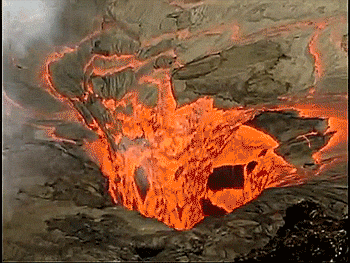I am writing checklists for my worker for each of the services my company provides. I am looking for ideas for what to include in these checklists to make sure we keep callbacks to a minimum.
here is an example of a house wash checklist I’m working on at the moment, if anyone has any ideas of how it can be improved, please let me know.
HOUSE WASH CHECKLIST
Scheduled time window (example 8am-11am: __________
Job Completion Time Goal (example, 8am- 10am): __________
Start Time (arrival time) ___________
Actual Finish Time (After wrapping up all equipment) __________
Talking to the costumer:
-
Knock on door, greet customer, and confirm that they are okay with your parking spot
-
Ask Customer if all windows are closed and all furniture, shoes and other delicate items are either moved inside or at least 20ft from the house, if yes tell the customer you can get started, if not, ask them if they are able to do so while you get your equipment set up.
If the customer Is unable to do so, remind them that there is a surcharge for removing furniture, and that the rate for that is included in the email sent to them with their quote, which is $50
(keep in mind, if window washing is also included, all screens should be removed by the customer before arrival)
- After talking to the costumer, immediately pull garden hose from hose reel, attach to spigot, begin filling buffer tank
Before Photos:
- Take before pictures of all sides of the house, if the house has four sides, take 4 photos. Take close up photos of any damage that already exists on the house. These photos are used in case the customer accuses us of causing damage.
Use the customer factor app to upload the photos on the job calendar
- Now that you’ve taken those photos, you’re going to want to look around the property for the dirtiest parts of the house, take a photo of these dirty spots on the house so that we can take a good after photo for our social media.
How to upload photos to customer factor:
Open customer factor app and log in
Click Calendars
Click on current job
Click photo
Checking house for potential issues:
Walk around the house and look for all cameras, electrical outlets, exposed or stained wood surfaces including doors, and anything else that may cause issues while washing the house.
- Use plastic to cover cameras, if they are in reach. if the camera is out of reach, simply avoid it and make sure that you do not put any chemical or water on the camera whatsoever. Electrical outlets do not usually need to be covered with plastic, but avoid hitting them with any chemical, and water.
Note: Some houses have stained wood surfaces, and the stain may come off if hit with SH, If the house has what looks like stained wood, to test it, put a tiny amount of chem on a cloth and test it on a tiny out of view area to see if the chem takes off the stain, if it does, the stained surface must be rinsed continuously with water if chem is being applied anywhere that may splash onto the stained surface.
Check front door, if the front door is a stained wood or exposed wood door, DO NOT HIT WITH CHEM OR WATER, cover with plastic. only wash metal or painted doors.
Things to remember:
remember that if SH gets on wood fences, it can make unintentional clean spots, rinse with water before and immediately after if chem gets on a wood fence.
When you are watching the house, you want to avoid spraying water on to the neighbor’s house, and getting chem on the neighbor’s house is out of question.
Start Washing:
What materials will you be washing on the house?
- Vinyl 1-2% SH MIX
- Hardie board 2% SH MIX
- Stucco 5% SH MIX ( may need to chem really dirty spots twice, chemical will kill plants, so soak plants constantly
- Aluminum siding 1-2% SH MIX
- Painted wood fascia board 1-2% SH mix
If the house is made of multiple different materials, for example if there is Hardie board and vinyl on the house, always go with the stronger option
If the house is especially dirty, you may need to increase the strength to clean the house quicker.
Once you have determined which strength of chem you need to wash the house, start by using a lower strength at the beginning, and increase the strength if the grime is not coming off easily.
Guide for setting SH %:
The above chart does not show how to get a 1% mix. If you were using a 1% mix you should set the water valve to five and the SH valve to .5
-
Set the mix valve to the appropriate SH %, put a softwash gun in a rocky area, or in any area that WILL NOT kill plants or grass, or leave unintentional clean spots on pavement or other surfaces. Open ball valve on softwash gun, and attach battery to softwash pump, let pump run for 90 seconds and then check if chem is coming out, if yes, begin applying chem to furthest side of the house, spreading it evenly against all of the following surfaces:
-
Exterior gutters
-
Back of gutters facing windows (if there is any)
-
Soffits
-
Facia board
-
Siding
-
Windows + window frames
-
Make sure that any surfaces that are seen through the houses windows are also chemed and rinsed
DO NOT HIT CAMERAS/ OUTLETS
-
As you apply the chem to the house, have a second technician start up the pressure washer, and begin rinsing the chem off with the low pressure tips, the chem should be rinsed off around 2 minutes after being applied to the house. Do not over rinse the house, simply make sure that all surfaces are 100% free of grime
-
Rinse all windows well to make sure no chemical is left to dry on them
-
After the entire house has been chemed and rinsed, remove all plastic from cameras, use a leaf blower to quickly remove leaves from the driveway, this is a nice easy way to go above and beyond for the customer.
-
If all other services are also completed, knock on the door and ask the customer “would you like to do a walk around the house with me to make sure that they are happy with all the work that has been done before we wrap up our equipment?” make sure that they are happy.
-
after they approve the job, Go on to the customer Factor app and mark the job as completed. this will automatically send an invoice to the customer. Confirm that the customer has received the invoice.
-
ask the customer how they would like to pay. If they are paying by check/cash you can collect it yourself and bring it back to Headquarters, if they would like to pay by card, use the square app and square card reader to collect payment. Make sure to include GST.
-
Thank the costumer
-
Clean up all equipment
-
Drain buffer tank
-
Change proportioner over to water and flush it out for 10 minutes
-
Walk around the property and make sure that no equipment is left before leaving.
Technicians signature:___________



